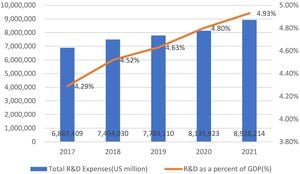On February 24, 2025, Lower Silesia found itself grappling with alarming levels of air pollution, raising urgent health concerns for its residents. Reports indicated severe quality issues, with PM2.5 and PM10 pollutants significantly exceeding safe limits.
At 7:12 AM, Wrocław’s air quality data showed PM2.5 pollution at 36 µg/m³, representing 144% of the standard norm, and PM10 levels at 85 µg/m³, which amounted to 212% of acceptable levels. That day was another example of worsening air quality trends originating from various pollution sources, predominantly from household heating methods and the increasing number of vehicles on the road.
A broader look at the state of airborne pollutants across Lower Silesia on the same day revealed PM2.5 at 31 µg/m³ (124% of the norm) and PM10 at 70 µg/m³ (175% of the norm). These figures reflect the alarming state of air pollution, prompting local authorities and health officials to sound warnings about prolonged outdoor exposure.
According to measurements taken throughout the week leading up to February 24, daily averages showed persistently high levels: on February 23, PM2.5 recorded 25 µg/m³ and PM10 reached 45 µg/m³. The troubling statistics highlight the need for urgent action to combat air pollution and protect public health.
The Ministry of the Environment has set clear regulations for acceptable air quality, as defined on August 24, 2012. For PM10, the daily limit is set at 50 µg/m³, which should not be exceeded more than 35 days per year, and the average annual concentration must remain below 40 µg/m³. Similarly, the accepted annual standard for PM2.5 is capped at 25 µg/m³, mirroring the World Health Organization’s guideline.
Profoundly concerning is the recognition of PM2.5 as one of the most harmful air pollutants, with particle sizes small enough to penetrate lung tissue and enter the bloodstream. Long-term exposure can lead to serious health issues, including respiratory and cardiovascular diseases. Studies have indicated short-term inhalation can cause symptoms such as coughing, exacerbation of asthma, and increased rates of heart attacks.
For example, Wrocław's PM2.5 levels were recorded at 40% above the annual average, indicating potentially hazardous conditions for sensitive groups, like children and the elderly. The evaluations relay the stark need for residents to take precautions, such as wearing masks and avoiding outdoor activities.
When investigating specific cities within Lower Silesia, air quality data varied significantly. Cities like Bolesławiec recorded PM2.5 at 80% of the norm and PM10 at 152%. Strzegom’s air quality indicated PM2.5 at 108%, with Jelenia Góra showing 132% for PM2.5 and PM10 readings at 112% of the standard norm.
The pervasive issue of smog, particularly linked to the region’s older solid fuel heating systems, continues to be a topic of concern. According to data, approximately 52% of smog produced nationwide stems from low emissions associated with inefficient home heating units.
The air quality problem has not gone unnoticed, as local governments allocate increasing funds to improve environmental results. For example, twelve metropolises are investing over 2.5 billion złoty annually for such initiatives. Nonetheless, substantial challenges remain, particularly arising from outdated heating methods and the rising number of vehicles driven within these urban settings.
Efforts like the Clean Air Program have been implemented to counteract the effects of air pollution. This initiative aims to incentivize homeowners to eliminate the use of outdated heating systems and invest in modern, eco-friendly alternatives. Financial aid under this program can reach up to 37,000 zł, depending on family income levels, significantly contributing to the fight against air contamination.
The program encourages several upgrades, including the modernization of heating systems and thermal insulation enhancements. Such measures are imperative as studies from the Ministry of Entrepreneurship and Technology indicated 19,000 Polish residents died due to smog-related causes just five years ago.
Understanding and combating the smog problem requires collective action. Organizations and municipalities promote awareness about responsible choices—whether it’s opting for cleaner heating methods or reducing car reliance—to materially lower pollution levels at the community level.
Nevertheless, the persistent and increasing pollution levels indicate the battle against air quality issues remains at the forefront of civic priorities. The recent data points from February 24 warn of possible health crises and underline the necessity for both governmental and individual actions to restore clean air to Lower Silesia and beyond. Continuous monitoring of air quality and responsive measures to curb emissions are not optional but are becoming urgent needs to secure the health and well-being of residents.



